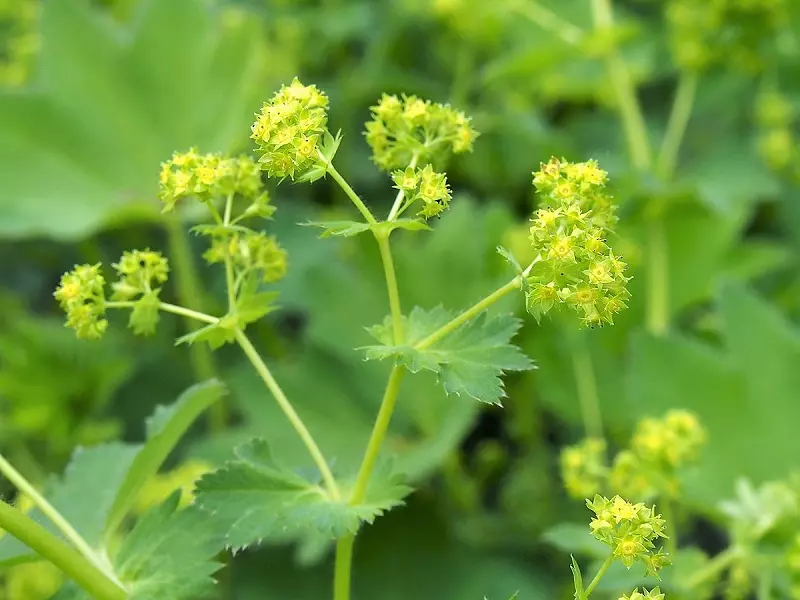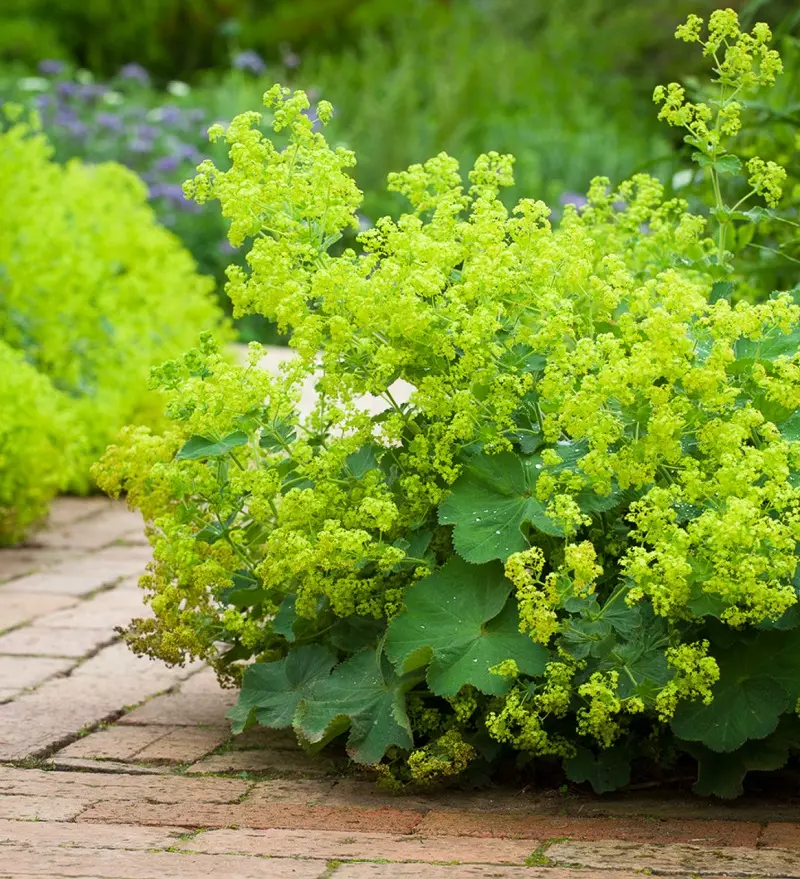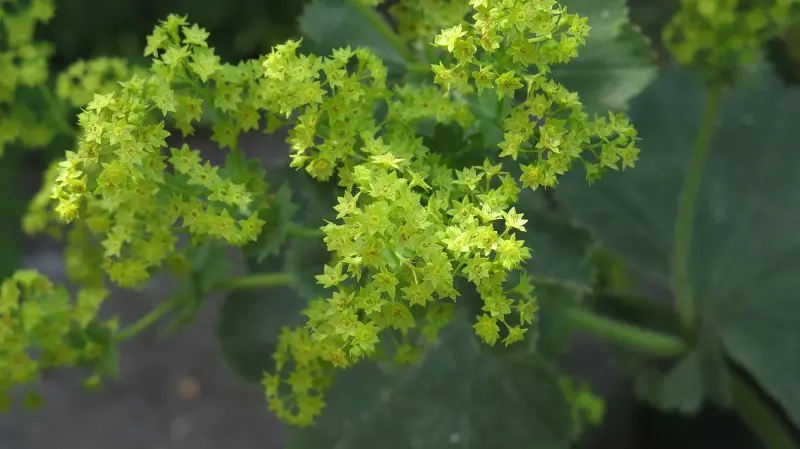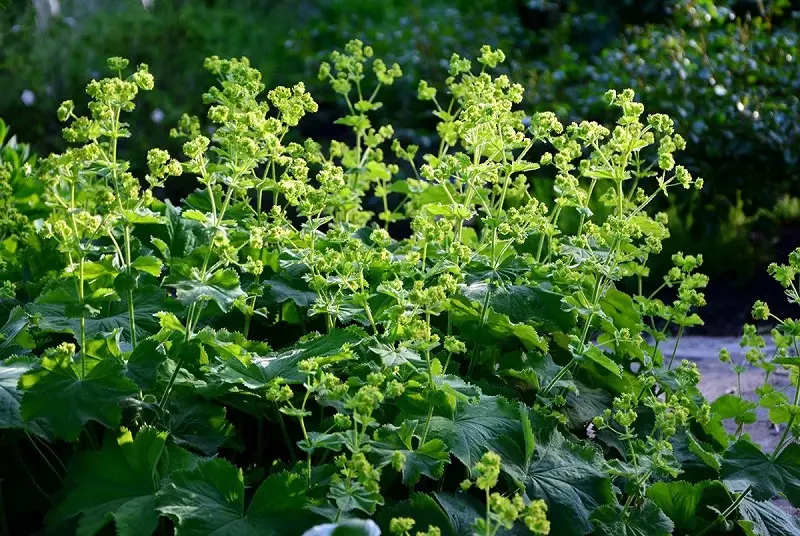Lady's Mantle Plant Care Guide - Beautiful Flower of Many Benefits
Lady's mantle is an interesting-looking plant and a perfect supplement in any garden. Thanks to its relatively low requirements and uncomplicated care, inexperienced gardeners will surely appreciate lady's mantle. What does this popular plant look like? Find out how to grow and take care of it.

Lady’s mantle and its origins
Lady’s mantle (Alchemilla mollis), or garden lady’s mantle is a plant from the group of perennials. It has a bushy habit and grows up to 50 centimeters (1.64 feet) tall. It’s a perfect addition to a garden, regardless of the yard’s size.
The characteristic leaves of lady’s mantle serve as the plant’s decoration. Their shape is round with incised margins. The leaves’ color is grayish green. Beautifully smelling flowers appear between them during the blooming season. They form yellow, loose inflorescences.
Lady’s mantle’s flowers appear in summer. They can be observed from the beginning of June, and last until the end of August.

Lady’s mantle – popular varieties
Lady’s mantle is usually picked because of its decorative character. Note that there are a few types of this plant. Here are the most popular varieties of lady’s mantle:
- Auslese – also known as Select or Robustica; has a spherical, but also distinctly upright habit; it’s slightly shorter than the original, as it grows up to 40 cm (1.31 ft) tall,
- Thriller – this variety grows up to 60 cm (ca. 2 ft), it has characteristic upright and thick habit.

Lady’s mantle – plant’s location and care
Easy maintenance is the biggest advantage of this plant. Lady’s mantle is highly tolerant as for its growing location. Its soil requirements are also quite low. Regardless, if you want to make sure the plant grows in the best possible conditions, plant it in clay, humus-rich soil of moderate moisture levels.
The soil’s pH doesn’t need any adjustment, which is a big plus.
Lady’s mantle prefers growing in shade and half-shade. You can plant it in a sunny location, but if so, it needs more frequent watering. Otherwise, it might get dehydrated.
The plant needs pruning after its blooming season. Just remove stems with flowers, which strengthens the plant. In spring, only remove dry leaves.

Lady’s mantle – health benefits
Lady’s mantle is a valued herb which has healing properties, and has been used in folk medicine for many years. The plant offers the following properties:
- astringent,
- antihemorrhagic,
- antibacterial,
- anti-inflammatory.
Lady’s mantle strengthens blood vessel structure. It also might alleviate fever. If used properly, the herb has a diuretic effect and improves digestion and bowel movement.
When to plant lady’s mantle?
Schedule planting lady’s mantle in the garden between April and September. This applies to older plants, relocated or purchased in pots at a flower store. The plants are usually sold with fully developed roots, which makes it easier to transfer them to their final location.
If you want to plant lady’s mantle seeds, spring is the best time for it. This way, the plant has time to sprout and get strong enough to survive winter.
Lady’s mantle – watering and fertilizing
Lady’s mantle requires regular watering only if it is exposed to strong sunlight. It can manage perfectly well in shade or half-shade, with rich and moist soil. In this case, you can limit watering without worrying the plant will get overly dry.
Alchemilla mollis doesn’t need excessive feeding. Regardless, an adequate product allows quicker development, especially during the vegetation period. You can use slow release products which perfectly supplement the plant’s mineral deficiencies.

Lady’s mantle – propagation
Division is the easiest method of lady’s mantle propagation. It can be done in spring (April) or fall – from October, without any limits.
- Delicately aerate the soil around the plant, and use e.g., a pitchfork to lever it up.
- Rinse the dug up plant in water and examine to find suitable parts for division.
- Place the divided plant at the same depth as it grew originally – press the soil around it and water it well.
Another method involves sowing seeds in springtime. But the seeds have to be pre-treated by keeping them at 5°C (41°F) for about 4 weeks. Thanks to this, the seeds are able to sprout at 10-15°C (50-59°F) after just 2 weeks from planting them in a target spot.
Is lady’s mantle vulnerable to pests and diseases?
The plant is prone mostly to aphids. The biggest infestations appear in spring, attacking especially young leaves. Make sure to remove these pests, using either home remedies or adequate store-bought products.
Lady’s mantle is also prone to root rot – especially if it grows in a too moist spot. Too frequent watering is not good for this plant, so pay a special attention to this aspect.

📍 Is lady's mantle a popular plant?
Lady's mantle is quite a common plant. It belongs to the group of perennials, and most importantly, it can withstand basically any conditions. Thanks to this, it's a universal flower.
📍 How to grow lady's mantle?
Lady's mantle's cultivation is not a complicated process. Just make sure it has good conditions, and you can enjoy the plant growing in your garden. Picking a good location and fertilizing the plant from time to time are also important aspects.
📍 Does lady's mantle have any benefits?
Lady's mantle is a valued plant among women. Thanks to the contents of salicylic acid, it reduces menstruation pain. Additionally, the plant has antibacterial and anti-fever properties. It also positively affects digestion and intestines.
Featured articles




